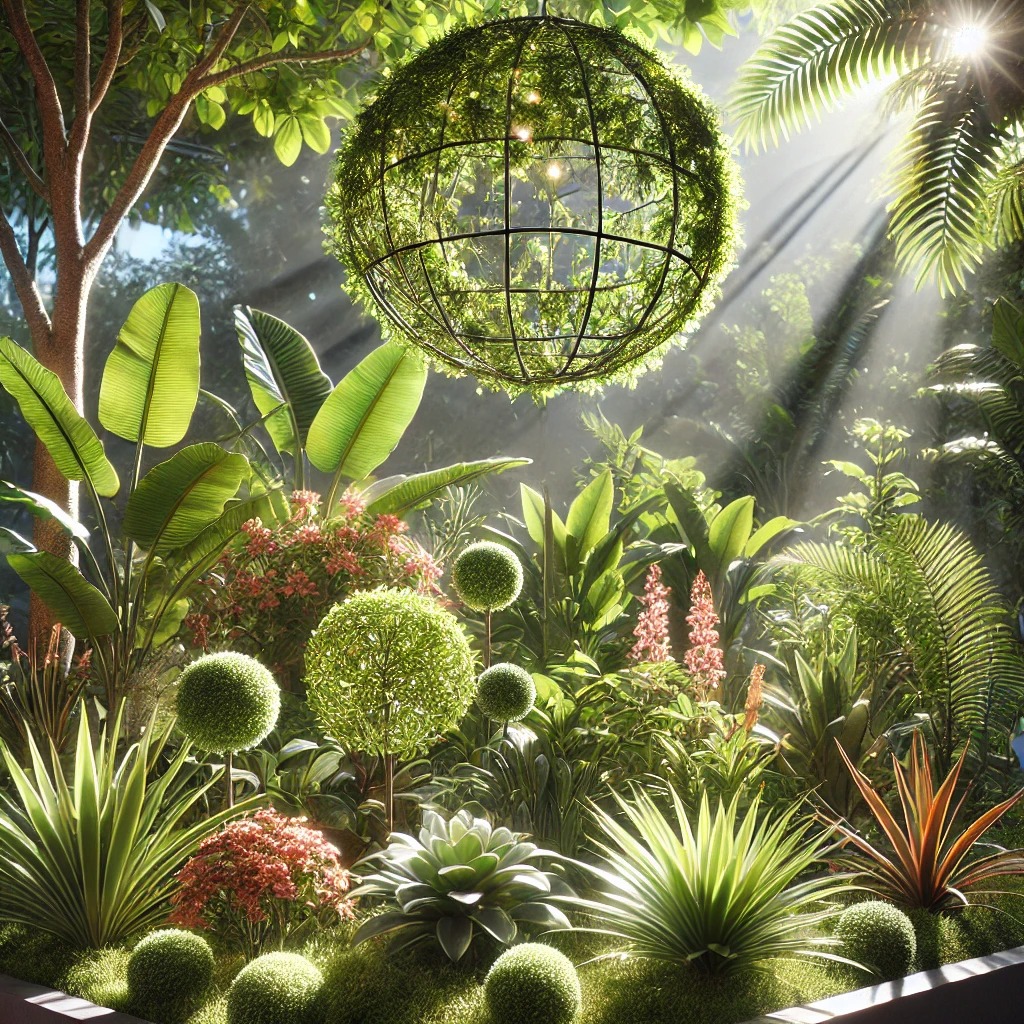When it comes to selling artificial greenery for outdoor use, understanding UV resistance is a must. Without this feature, artificial plants can fade, crack, and deteriorate under the sun, which is the last thing your customers want after investing in what should be low-maintenance, long-lasting products. This article is here to help you understand what UV resistance is, why it matters, and how to choose the best UV-resistant greenery for your wholesale business.
-- What Causes Artificial Plants to Fade?
When artificial plants are exposed to prolonged sunlight without UV protection, the UV rays trigger a chemical breakdown in the materials. The energy from the UV light breaks the bonds within the plastic's molecular structure, leading to degradation. This breakdown releases reactive chemicals that contribute to the fading of color and the weakening of the material.
As the structure of the plant deteriorates, the pigments lose their vibrancy, and the plant becomes discolored and more fragile. Over time, this process accelerates, causing the plant to lose its original appearance and become more vulnerable to further damage from continued sun exposure. This is particularly true for plants made from materials like silk, which may only last a few weeks in direct sunlight before significant deterioration occurs.

Most artificial plants are made from plastics such as polyester, polyethylene (PE), polyvinyl chloride (PVC), and polyurethane (PU). While these materials are more durable than silk, they are still prone to fading if not treated with UV protection. UV inhibitors, when integrated during production, can significantly extend the life of artificial plants, maintaining their color and structural integrity even under prolonged sun exposure. Without this treatment, even high-quality artificial plants will degrade over time in outdoor environments.
-- What makes an artificial plant UV-resistant? Understanding the Types of UV Protection:
UV resistance in artificial plants is crucial to maintaining their appearance and durability when exposed to sunlight. There are three main methods of UV protection that manufacturers use to help prevent fading and deterioration:
Weatherproof Plants: These plants are designed to handle outdoor conditions like rain, wind, and temperature fluctuations. However, they are not always equipped with UV protection. While they may be made from sturdy materials like plastic, without UV resistance, exposure to the sun can still cause these plants to fade and become brittle over time. It's important to ensure that any weather-resistant plant you select for outdoor use includes UV protection for better longevity in sunlight.
UV-Coated Products: These products are treated with a UV-resistant coating applied to their outer surfaces, providing an additional layer of protection against ultraviolet rays. Although this coating effectively shields the plant from UV-induced damage initially, its durability may diminish over time, especially when exposed to severe sunlight or harsh environmental conditions. The coating can wear down gradually due to exposure to the elements, reducing its protective efficacy and increasing the likelihood of uneven fading or degradation if not maintained or reapplied regularly.
Fully UV-Stable Products: These products are manufactured using UV-resistant materials that are integrated throughout the entire composition of the plant, ensuring uniform and long-lasting protection against ultraviolet radiation. By embedding UV stabilizers directly into the plant's fibers and core materials, these products exhibit enhanced durability and resistance to fading, discoloration, and structural deterioration, even under extreme environmental conditions. Fully UV-stable products are specifically engineered to endure prolonged and intense sun exposure, making them the ideal choice for demanding outdoor settings where longevity and preservation of aesthetic quality are paramount.

--How Long Do UV-Resistant Plants Last?
The lifespan of UV-resistant plants depends on the quality of the materials and the level of UV exposure they endure. High-quality artificial greenery with built-in UV inhibitors can last anywhere from 3 to 5 years in direct sunlight before showing significant signs of fading. In milder climates or less exposed areas, these plants can last even longer, sometimes up to 8 years or more.
On the other hand, plants treated with surface UV coatings may only last 1 to 2 years before the protective layer begins to degrade, especially in harsher environments. As a result, it's essential to consider the level of exposure when recommending UV-resistant products to your clients.
In contrast, untreated or low-quality artificial plants, particularly those made from delicate materials like silk, tend to degrade much faster. Without UV protection, these plants may only last a few months when exposed to direct sunlight, quickly fading, becoming brittle, and losing their aesthetic appeal.
For artificial plants that do not have built-in UV protection, applying a UV-resistant spray can help extend their lifespan. However, this spray acts as a surface-level protectant and will need to be reapplied periodically, depending on the intensity of sun exposure and environmental conditions. Regular maintenance is essential to ensure that the plants continue to look vibrant and resist fading over time.
-- Does UV Spray Work on Artificial Plants?
UV spray can be an additional layer of protection for artificial plants, but it should not be relied upon as a long-term solution for heavy sun exposure. UV sprays work by coating the plant with a protective layer that reflects or absorbs UV rays. However, this protection is temporary and requires regular reapplication—usually every 6 to 12 months, depending on environmental conditions.
While UV spray can help extend the life of artificial plants, it cannot replicate the durability of UV inhibitors integrated into the material itself. It may be a useful tool for plants that are only sporadically exposed to sunlight or for indoor plants placed near windows.
UV protection spray can be an effective supplemental solution for preserving artificial plants, whether they're displayed indoors or exposed to outdoor elements. The spray creates an external protective layer on the surface of the plant's leaves, shielding them from the damaging effects of sunlight. Unlike UV-resistant plants, which have UV inhibitors embedded within their materials, UV spray only offers surface-level protection.

For artificial plants that lack built-in UV protection, using a UV spray or sealant can provide temporary defense against fading and degradation. However, this protection is not permanent. Depending on the level of sun exposure, it may be necessary to reapply the spray every six months or more frequently to maintain its effectiveness and keep your plants looking vibrant. Regular maintenance with UV spray can extend the life of your plants, though it won't provide the same long-term durability as plants manufactured with integrated UV resistance.
-- How to Evaluate UV Resistance in Artificial Greenery?
To ensure you're offering truly UV-resistant products, you'll want to check a few things:
Certifications: Look for products that meet industry standards, like ISO or ASTM certifications, which test for UV resistance. These certifications are a good indicator that the product has been properly tested.
Material Composition: Ask suppliers about the materials and additives used in production. Products made with UV inhibitors mixed directly into the material will usually be more durable than those that just have a coating.
Warranties: Check whether the manufacturer offers a warranty on UV protection. A warranty shows that the company stands behind its product's longevity and performance.
By evaluating these factors, you can be confident that you're providing your customers with the best options available.

Conclusion:
UV resistance is a crucial factor when it comes to outdoor artificial greenery. By understanding how it works and what to look for, you can ensure that you're providing your customers with high-quality products that will stand the test of time.
Offering UV-resistant greenery not only reduces replacement costs and maintenance but also strengthens your position in the market as a supplier of durable, long-lasting solutions. With the right knowledge, you can confidently help your clients make informed decisions, leading to better results and long-term success for both your business and theirs.



